| [1] 顾广飞,张海龙,贺石生,等.微创经椎间孔腰椎体间融合术治疗腰椎管狭窄合并腰椎不稳症[J].中华外科杂志, 2011,49(12):1081-卜先知1085.[2] 韩骁,田伟,刘波,等.术中即时三维导航在后凸成形术中的应用[J].中华创伤骨科杂志,2010,12(2):109-112.[3] 冯贵游.计算机导航辅助脊柱外科手术[J].中华创伤骨科杂志, 2007,9(9):802-804.[4] Schleicher P,Beth P,Ottenbacher A,et al.Biomechanical evaluation of different asymmetrical posterior stabilization methods for minimally invasive transforaminal lumbar interbody fusion.J Neurosurg Spine.2008;9(4):363-371. [5] Yagi M, Okada E, Ninomiya K, et al. Postoperative outcome after modified unilateral-approach microendoscopic midline decompression for degenerative spinal stenosis. J Neurosurg Spine. 2009;10(4): 293-299.[6] Arts MP, Kols NI, Onderwater SM, et al. Clinical outcome of instrumented fusion for the treatment of failed back surgery syndrome: a case series of 100 patients. Acta Neurochir (Wien). 2012;154(7):1213-217.[7] 张文志,段丽群,尚希福,等.显微镜辅助下微创经椎间孔腰椎椎间融合术治疗腰椎退行性疾病的疗效观察[J].中国修复重建外科杂志,2013,27(3):268-273.[8] 黎庆初,尹刚辉,张忠民,等.微创Wihse入路与传统后正中入路手术治疗双节段腰椎管狭窄症的疗效比较[J].中国脊柱脊髓杂志, 2012,22(9):812-817.[9] 杨进,孔清泉,宋跃明,等.微创小切口与开放经椎间孔腰椎椎间融合术治疗单节段腰椎退变疾患的近期疗效比较[J].中国修复重建外科杂志,2013,27(3):262-267.[10] McCulloch JA. Chemonucleolysis: experience with 2000 cases. Clin Orthop Relat Res. 1980;146:128-135.[11] Peul WC, van Houwelingen HC, van den Hout WB, et al. Leiden-The Hague Spine Intervention Prognostic Study Group. Surgery versus prolonged conservative treatment for sciatica. N Engl J Med. 2007;356(22):2245-2256.[12] 唐毓金,蓝常贡,陆敏安,等.上颈椎骨折脱位侧块钛板椎弓根螺钉内固定置入与宿主的生物相容性[J].中国组织工程研究与临床康复,2009,13(30):5959-5962.[13] 王建华,王善琛,陈立业,等.几种微创椎间融合术内固定术式的生物力学比较[J].脊柱外科杂志,2011,9(1):35-38.[14] 关宏刚,王刚,霍智铭,等. IsoC-3D计算机导航结合Mast Quadrant通道管微创治疗腰椎退行性疾病[J].中国骨伤,2012, 28(6):451-454.[15] 周蔚,徐建广,孔维清,等.计算机导航辅助下行后路内固定椎体植骨治疗胸腰椎骨折[J].中华创伤骨科杂志,2011,13(2):101- 105.[16] Lieberman IH, Willsher PC, Litwin DE,et al. Transperitoneal laparoscopic exposure for lumbar interbody fusion. Spine. 2000;25(4):509-515.[17] Foley KT, Holly LT, Schwender JD. Minimally invasive lumbar fusion. Spine. 2003;28(15 suppl):S26–S35.[18] Jang JS, Lee SH. Minimally invasive transforaminal lumbar interbody fusion with ipsilateral pedicle screw and contralateral facet screw fixation. J Neurosurg Spine. 2005; 3(3):218-223. PMID:16235705[19] Adogwa O, Parker SL, Bydon A, et al. Comparative effectiveness of minimally invasive versus open transforaminal lumbar interbody fusion: 2-year assessment of narcotic use, return to work, disability, and quality of life. J Spinal Disord Tech. 2011;24(8):479-484. [20] Grob D, Bartanusz V, Jeszenszky D, et al. A prospective, cohort study comparing translaminar screw fixation with transforaminal lumbar interbody fusion and pedicle screw fixation for fusion of the degenerative lumbar spine. Bone Joint Surg Br. 2009;91(10):1347-1353. [21] Shunwu F, Xing Z, Fengdong Z, et al. Minimally invasive transforaminal lumbar interbody fusion for the treatment of degenerative lumbar diseases. Spine.2010;35 (17): 1615-1620.[22] Wang J, Zhou Y, Zheng Z, et al. Comparison of one-level minimally invasive and open transforaminal lumbar interbody fusion in degenerative and isthmic spondylolisthesis grades 1 and 2. Eur Spine. 2010;19(10):1780-1784.[23] German JW, Foley KT. Minimal access surgical techniques in the management of the painful lumbar motion segment. Spine. 2005;30(suppl 16):S52-S59.[24] Scheufler KM, Dohmen H, Vougioukas VI. Percutaneous transforaminal lumbar interbody fusion for the treatment of degenerative lumbar instability. Neurosurgery .2007;60(suppl 4):203-212.[25] Isaac O,Karikari MD,Peter M, et al. Minimally Invasive Lumbar Interbody Fusion in Patients Older Than 70 Years of Age: Analysis of Peri- and Postoperative Complications. Neurosurgery. 2011;68(4):897-902.[26] 徐林,俞兴,郑大滨,等. 脊柱导航三维影像系统在椎弓根螺钉固定术中的应用[J].中国矫形外科杂志,2004,11(24):1895-1897.[27] 杨永宏,郑杰.计算机辅助导航系统及其骨科应用[J].中华创伤骨科杂志,2005,7(7):614-616.[28] Rosen DS, Ferguson SD, Ogden AT,et al. Obesity and self-reported outcome after minimally invasive lumbar spinal fusion surgery. Neurosurgery. 2008;63(5):956-960.[29] Cammisa FP Jr, Girardi FP, Sangani PK, et al. Incidental durotomy in spine surgery. Spine. 2000;25(20):2663-2667.[30] 肖波,毛克亚,王岩,等.微创经椎间孔腰椎体间融合术采用混合内固定的学习曲线[J].中国脊柱脊髓杂志,2013,23(3):209-214.[31] 陈立业,夏虹,王建华,等.双侧钉棒及同侧单钉棒置入内固定的生物力学比较[J].中国组织工程研究与临床康复, 2011, 15(48): 8985-8988.[32] Khoo LT, Palmer S, Laich DT, et al. Minimally invasive percutaneous posterior lumbar interbody fusion. Neurosurgery. 2002;51(5 suppl):S166-S181.[33] Schwender JD, Holly LT, Rouben DP, et al. Minimally invasive transforaminal lumbar interbody fusion (TLIF): technical feasibility and initial results. Spinal Disord Tech. 2005;18 (suppl): S1-S6. |
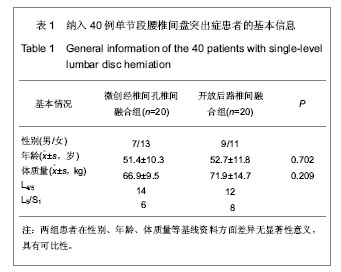
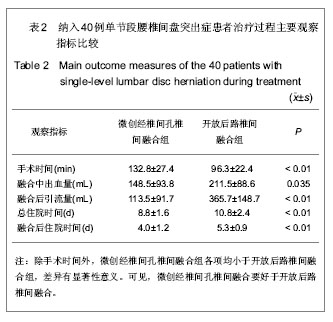
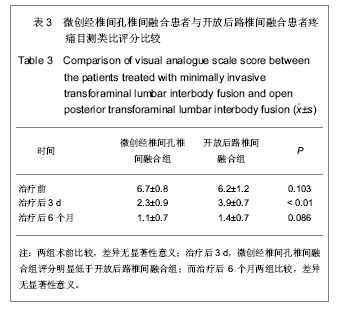
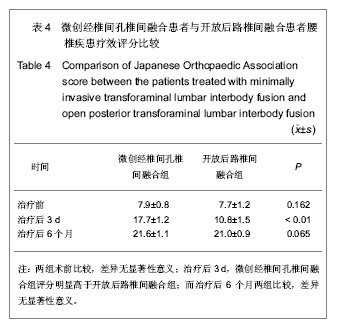
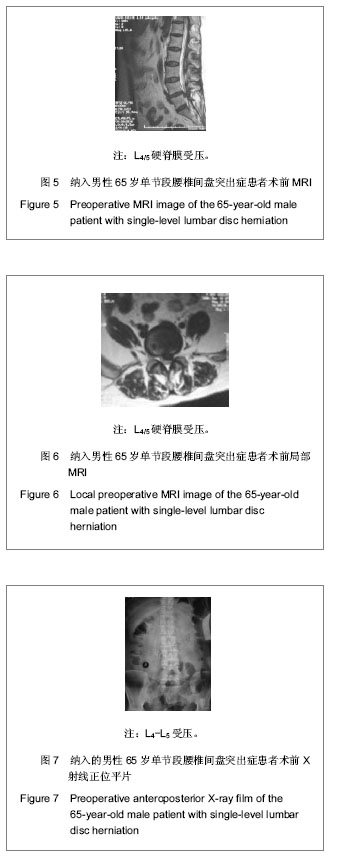
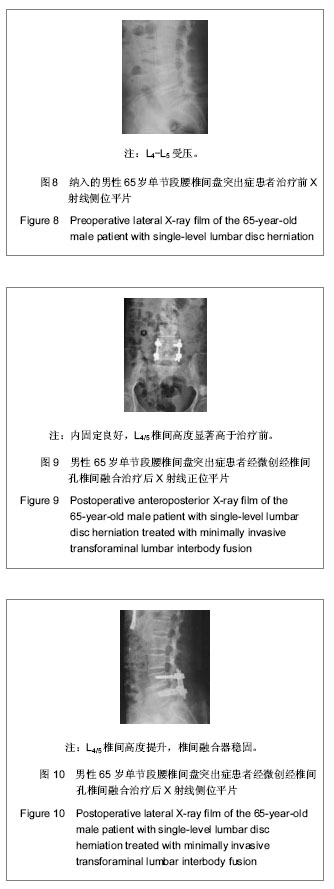
.jpg)
.jpg)
.jpg)
.jpg)